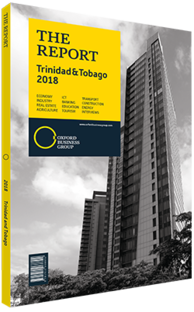Jacqueline Quamina, Chairman, National Insurance Board (NIB): Interview

Interview: Jacqueline Quamina
What is the structure of NIB’s investment portfolio?
JACQUELINE QUAMINA: The composition of the investment portfolio is provided for in the National Insurance Act. This specifies the type, the amount and the jurisdictions in which investments are permitted. As such, only 20% of the investment portfolio can be invested abroad. This percentage is fairly restrictive, especially as investment opportunities in the local economy are currently limited. In addition, our portfolio for international investments is at approximately 19.5% of the overall portfolio and inching towards the ceiling. The NIB has recently requested an increase to a maximum of 40%, and we are hopeful that this will be forthcoming. In recent years the international portfolio has been able to attract a return that is considerably higher than the local rate of return, with average yields reaching approximately 16%, compared to a much lower 4.5% generated locally. The current regulatory framework is equally conservative with respect to the type of investment and the countries in which we can invest. At this time, investments are only permitted in the US, the UK and other Commonwealth countries, in addition to Trinidad and Tobago. We have recommended that the number of countries in which we can invest be expanded to include all OECD member states, which will allow us to grow a richer and more flexible portfolio.
How will the demographic shift impact the national insurance system and the policies of the NIB?
QUAMINA: In this respect, T&T is not unique – we are no different from the rest of the world. As the population ages, the national labour force – people between the age of 15 and 59 – is shrinking, and as a consequence, so too are the number of people making national insurance contributions. This is in part due to the increase in the migration of nationals and in part due to a decreasing fertility rate. At the same time, in T&T we now have longer life expectancy rates, so the number of years that we will have pension benefits will also increase. The NIB must adjust relevant parameters of the national insurance system in order to take these issues into account. For example, by gradually increasing the retirement age from 60 to 65, or by implementing controlled immigration to help alleviate the projected declining labour force. However, such people would need to be legally employed, and together with their employer, they would have to make the required payments into the national insurance fund.
To what extent can the solvency and viability of the national insurance system be asserted?
QUAMINA: The long-term viability of the system will depend primarily on the NIB’s adjustment to external factors that may affect investments the fund has made.
Primarily, this implies changes in how and where we invest, as well as an increase in both the retirement age and employer and employee contribution rate. The requested increase to 15.6% from the current rate of 13.2% will encounter some opposition from the general public – as will the increase in the retirement age. Notwithstanding this resistance, we have also recently observed that it has become a recurrent topic of discussion, and we are becoming sensitised to the necessity of these changes for the sake of the system’s long term viability and sustainability. That said, philosophical differences with these issues are expected to occur and resistance should be expected, as is always the case when taxes or other social contributions are increased.
It is crucial that the NIB continues to inform and educate the general public so they understand the issues and the NIB’s rationale. It is also important that stakeholders are given an opportunity to raise concerns, and contribute to the system revisions.
The tripartite structure of the NIB, which encompasses businesses, labour and government, undoubtedly fosters an interesting dynamic, where the impact on and needs of each group of our society are thoroughly considered, and policies shaped accordingly.
You have reached the limit of premium articles you can view for free.
Choose from the options below to purchase print or digital editions of our Reports. You can also purchase a website subscription giving you unlimited access to all of our Reports online for 12 months.
If you have already purchased this Report or have a website subscription, please login to continue.

